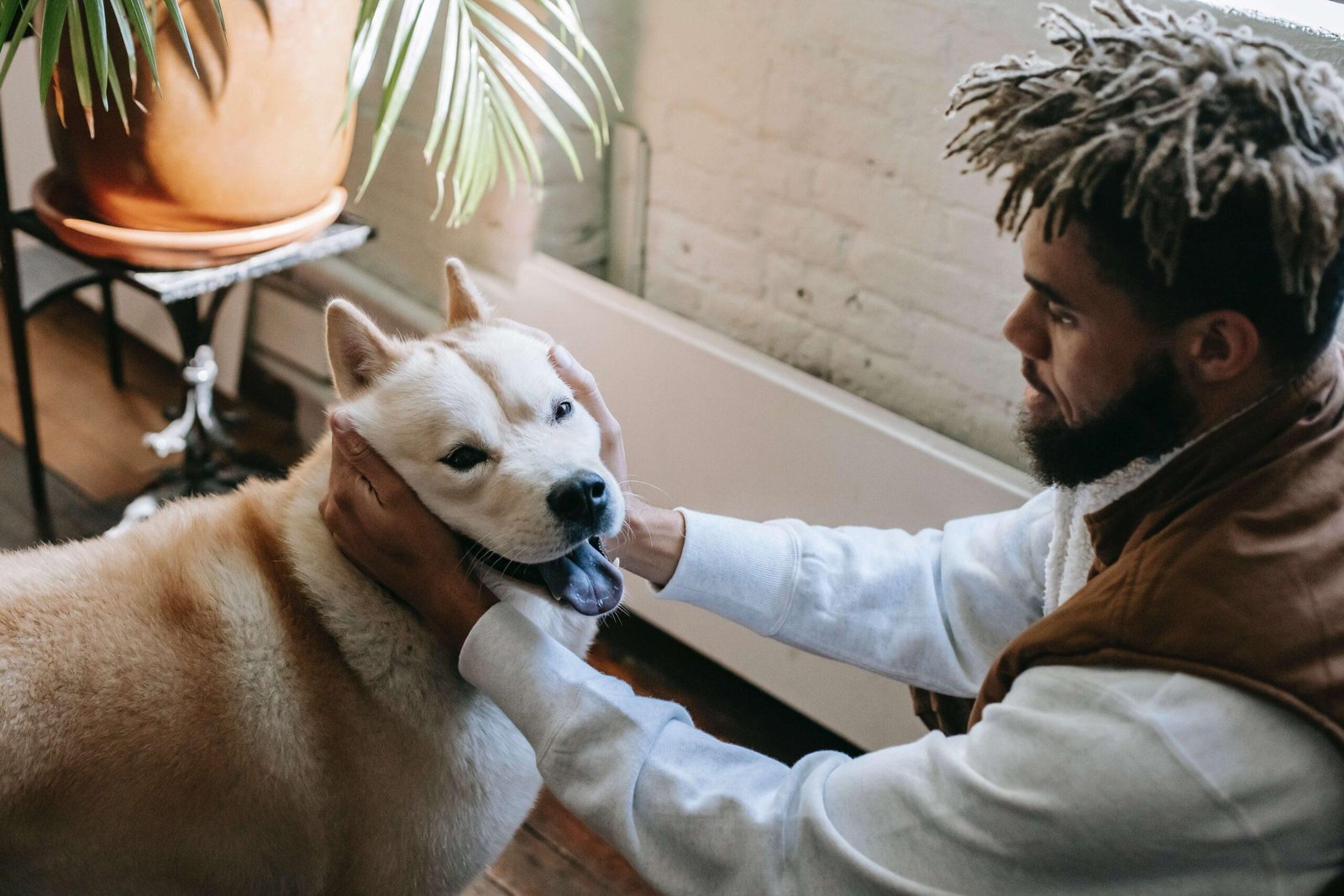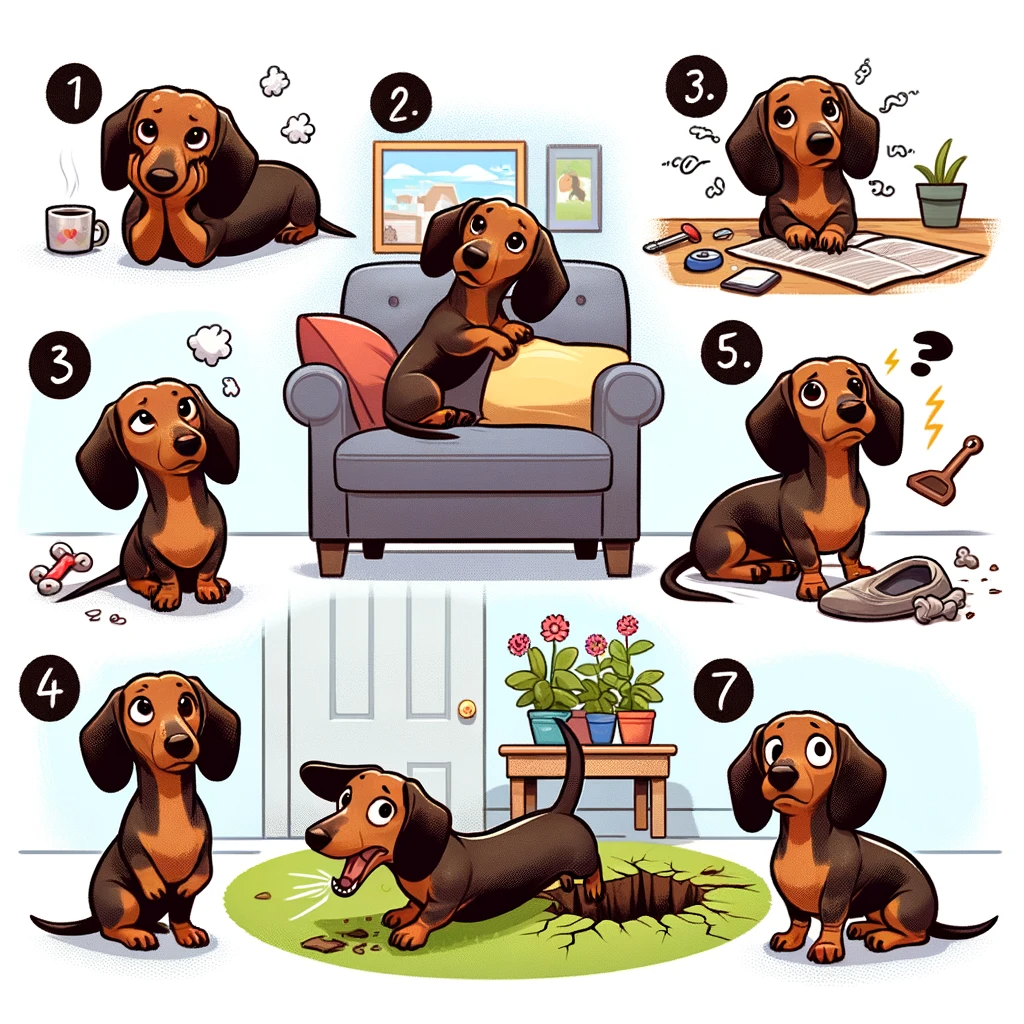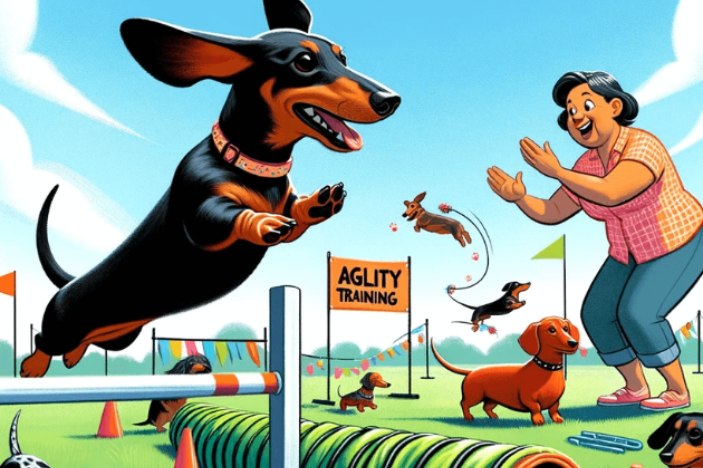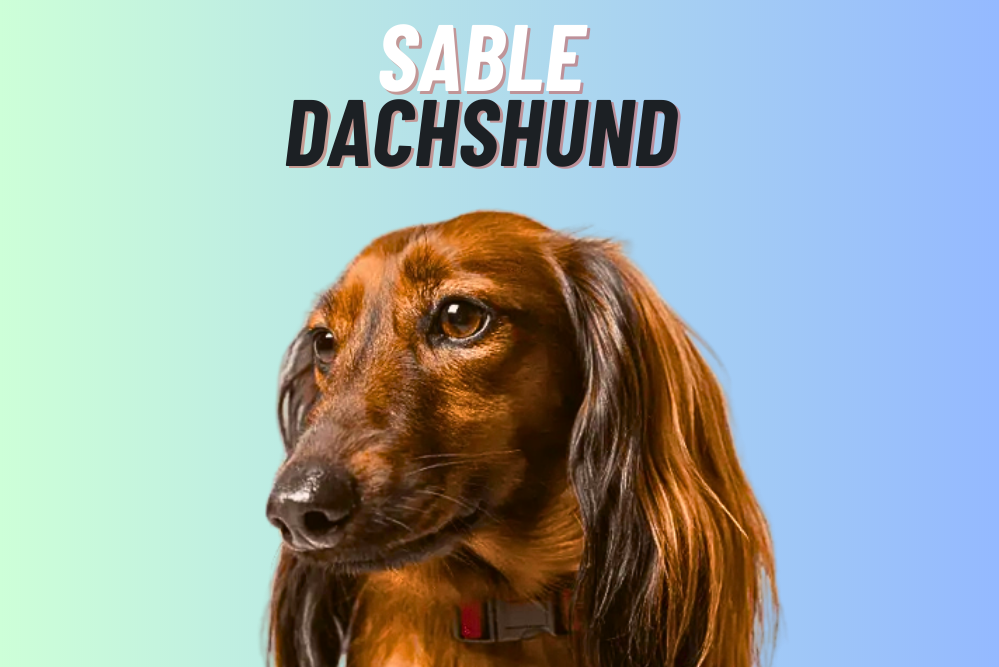The Dachshund is out of control
You’re always looking for ways to cut costs and save money, but when it comes to your pet you may be overlooking one of the most important aspects of providing a comfortable home for your dachshund. And in the case of a dachshund puppy out of control, this might not be such a bad thing.
It turns out that many people are unaware of some serious problems with these furry friends that could lead to their downfall. In this essay, we’ll look into a few common problems that arise with dachshund small dogs and discuss potential solutions. We hope that by reading this article you will become aware of some potential pitfalls before they even become a problem!
What are Dachshund Puppies and What Can You Do about them?
Pups of the dachshund breed are a variety of canines that began in Germany. They are small and have short bodies, making them easy to take care of. However, they can be quite out of control when it comes to their behavior. One common issue that Dachshund puppies can face is becoming destructive.
This means that they become ENGAGED in something that isn’t related to their well-being or/and the safety of others. For example, if a Dachshund puppy becomes fixated on getting a toy away from someone, this could lead to some serious problems.
How Do You Deal With an Out of Control Dachshund?
Dealing with an out-of-control Dachshund can be challenging, but there are several strategies you can try to regain control and manage their behavior. Here are some steps you can take:
Stay calm
It’s important to remain calm and composed when dealing with an out-of-control dog. Dogs can sense your emotions, so maintaining a calm demeanor will help prevent escalating the situation.
Set Boundaries
Establish clear boundaries and rules for your Dachshund. Consistency is key, so make sure everyone in your household enforces the same rules. This will help your Dachshund understand what is expected of them.
Positive reinforcement
Reward your Dachshund for good behavior using positive reinforcement techniques such as treats, praise, and playtime. This will encourage them to repeat the desired behaviors.
Training and socialization
Invest time in training your Dachshund and teaching them basic obedience commands like sit, stay, and come. Enroll them in a training class or work with a professional dog trainer who has experience with Dachshunds. Socializing your Dachshund with other dogs and people can also help reduce their tendency to act out.
Exercise and mental stimulation
Dachshunds are an active breed and need regular exercise to burn off their energy. Engage them in daily walks, play sessions, or interactive toys to keep them mentally and physically stimulated. A tired dog is generally a better-behaved dog.
Management tools
Consider using management tools such as a crate, baby gates, or a leash to control your Dachshund’s behavior when needed. These tools can provide a safe and controlled environment while you work on their training and behavior.
Seek professional help
If your Dachshund’s behavior continues to be a challenge despite your best efforts, it may be beneficial to consult with a professional dog trainer or a veterinary behaviorist. They can assess the situation, provide personalized advice, and develop a behavior modification plan tailored to your Dachshund’s needs.
Remember, training and behavior modification takes time and patience. Consistency, positive reinforcement, and understanding your Dachshund’s unique personality will go a long way in helping you regain control and foster a positive relationship with your pet.
How to stop an out-of-control dachshund’s Behavior?
One way to stop a dachshund puppy out of control is by setting boundaries calmly and firmly. If you don’t have time for physical punishment or else feel like it would be too disruptive, you may need to use other forms of discipline like verbal warnings or positive reinforcement instead. Remember: never leave your dachshund pup unsupervised for more than 30 minutes at a time!
How to Keep Your Dachshund Puppy Safe and Healthy.
It’s important to keep your Dachshund puppy on a leash at all times. This will make it harder for him to escape or create problems. Bathing your Dachshund puppy regularly is also important, as he needs water and exercise to stay healthy. You must also give him nourishing food in order to keep him happy and healthy. Finally, play with your puppy Dachshund in the yard or take him on walks to exercise him.
Bathe your Dachshund Puppy regularly
Bathing your Dachshund puppy regularly is one way to keep him safe and healthy. He needs fresh air and water, so it’s important that you bathe him often. However, there are other ways to keep your Dachshund puppy safe and healthy too: by exposing him to a cold or heat treatment every day (this can be done outside), providing enough space for play, or warning his owners if he starts making any noises that might indicate an emergency.
Feed Your Dachshund Puppy a good diet.
Feeding your dog a balanced diet is very important for his overall health and well-being – check out our full list of food items for dogs here! It’s also helpful to feed your pup a good diet whenever you want to get him excited about food (or just give her some extra something). Exercise is essential for keeping dogs happy, so make sure you provide plenty of activity time for your pup every day!
Exercise Your Dachshund Puppy.
Exercising your dog can help keep them happy and healthy – try out some fun activities like walking them in the park, playing catch with them in the backyard, or throwing a ball around the house! By doing some simple things like these, you can help ensure that your pup gets plenty of physical activity without putting too much stress on their mind or body.
How to Help Keep Your Dachshund Puppy Happy and Healthy.
A healthy Dachshund Puppy needs plenty of space, lots of love, and frequent exercise. To keep your pup happy and healthy, make sure you provide all of these things. To keep your Dachshund Puppy comfortable, try to place it in a warm environment with plenty of toys, playtime, and water. You can also try keeping the room clean and free of harsh chemicals or pollutants.
Avoid stress
Stress is one of the top reasons dogs become unhappy and sick. If you can avoid it, do so! It’s important to understand that stress isn’t simply a problem for dogs; it can be any animal’s Achilles heel. Make sure you never put pressure on your dog to do too much or handle stressful situations poorly – this will only lead to tension and unhappy behavior in the future.
Keep your Dachshund Puppy healthy
Dogs require a lot of exercise, even if they don’t seem to need it at first glance. Make sure to give your pup enough exercise by providing safe activities like hiking, playing fetch, biking, or walking him around outside regularly (even if he doesn’t seem interested). Additionally, make sure you feed him high-quality meat and fresh vegetables every day – these are essential for maintaining a healthy fur coat and overall health.
Can you crate-train the puppy to quiet down?
Yes, crate training can be an effective way to help calm a highly active dog. Crate training provides a safe and secure place for your dog and can help them relax and settle down. Here’s how you can use crate training to calm your dog:
Choose the right crate
Choose an appropriately sized crate that allows your dog to stand, roll around and lie down comfortably. Make sure it has adequate ventilation and a comfortable bed.
Introduce the crate in a positive way
Make the crate a positive and inviting place for your dog. Introduce them gradually by placing a crate, toys or their favorite blanket inside the crate. Let them explore Crete at their own pace without forcing them.
Associate positive experiences with the crate: Encourage your dog to voluntarily enter the crate by placing food or feeding him near the crate. Associate positive experiences with being in the crate, such as receiving a treat or compliment.
Start with a short period of time
In the beginning, keep the crate door open and let your dog get in and out freely. Once they are comfortable in the crate, begin to gradually close the door for short periods while still nearby. Gradually increase the duration as your dog becomes more comfortable.
Provide a quiet environment
Place the crate in a quiet area away from excessive noise or disturbance. Dimming the lights and playing soft, soothing music can also help create a calming environment for your dog.
Use crate time to relax
Encourage your dog to relax in the crate by offering a special chew toy or a Kong filled with treats or peanut butter. It aims to associate Crete with relaxation and positive experiences.
Stick to a Routine
Establish a consistent routine for crate training, including regular crate times for naps, rest breaks, and quiet time. Consistency helps your dog develop a sense of routine and associate the crate with comfort.
Avoid using crates as a punishment: It is important to never use crates as a punishment. The crate should always be a positive and safe place for your dog.
Remember, crate training requires patience and positive reinforcement. Gradually increasing the duration and using positive associations will help your dog learn to calm down and see the crate as a comfortable place. It’s important to monitor your dog’s behavior and gradually increase crate time as they become more comfortable. If you have any concerns or need additional guidance, consult a professional dog trainer or veterinarian.
How do you calm down a hyper puppy fast?
Calming down a hyperactive puppy quickly can be challenging, but there are several techniques you can try to help them relax. Here are some tips to calm down a hyper puppy:
Provide exercise
Hyperactivity in puppies is often a result of pent-up energy. Engage your puppy in physical activities such as playtime, brisk walks, or interactive games like fetch. Physical exercise helps burn off excess energy and promotes relaxation.
Mental stimulation
Along with physical exercise, provide your puppy with mental stimulation to keep their mind engaged. Use puzzle toys, treat-dispensing toys, or obedience training sessions to challenge their mind and tire them out mentally.
Create a calm environment
Set up a quiet and peaceful area for your puppy to relax. Use a comfortable bed or crate where they can feel secure. Dim the lights, play soft music or white noise, and minimize distractions to create a calming atmosphere.
Time-outs
If your puppy becomes overly hyperactive, implement short time-outs. Place them in a calm and confined area, such as a playpen or crate, for a few minutes. This can help them settle down and regain control of their excitement.
Relaxation techniques
Explore relaxation techniques such as gentle massage or calming aromatherapy. You can try using a lavender-infused spray or diffuser, which may have a soothing effect on your puppy.
Consistent routine
Establish a consistent daily routine for your puppy, including regular feeding times, play sessions, and rest periods. Predictability and structure can help reduce hyperactivity by providing a sense of security and stability.
Avoid reinforcing hyper behavior
Be careful not to inadvertently reinforce hyperactive behavior. Avoid engaging in overly excited play or rewarding hyper behavior with attention, as this can reinforce the behavior. Instead, reward and interact with your puppy when they are calm and well-behaved.
Stay calm and patient
It’s essential to remain calm and patient when dealing with a hyper puppy. Dogs can pick up on your energy, so staying relaxed and composed can help them settle down faster.
Remember that calming down a hyper puppy takes time and consistent effort. If you find that your puppy’s hyperactivity persists or becomes overwhelming, consider seeking guidance from a professional dog trainer or a veterinarian who can provide personalized advice and support.
How can I stop my dog from having tantrums?
If your dog is prone to having tantrums, it’s important to address the underlying causes and work on behavior modification techniques to help them manage their emotions better. Here are some strategies to help stop your dog from having tantrums:
Identify triggers
Observe your dog closely to identify the specific triggers that lead to tantrums. These triggers could be situations, objects, people, or even specific actions. Once you know the triggers, you can take steps to avoid or manage them proactively.
Provide structure and routine
Dogs thrive on consistency and structure. Establish a predictable routine for your dog’s daily activities, including feeding, exercise, playtime, and rest. This predictability can help reduce stress and anxiety, which may contribute to tantrums.
Train for impulse control
Teach your dog impulse control exercises like “sit,” “stay,” and “leave it.” These commands can help your dog learn self-control and redirect their attention away from triggers that might otherwise cause tantrums.
Positive reinforcement
Use positive reinforcement techniques to reward calm and appropriate behavior. Whenever your dog remains calm in a potentially triggering situation, offer treats, praise, and affection. By rewarding calm behavior, you are reinforcing their ability to remain composed and teaching them alternative ways to cope.
Provide mental and physical stimulation
Tantrums can sometimes stem from boredom or excess energy. Ensure your dog receives sufficient mental and physical stimulation through daily exercise, interactive toys, puzzle games, and training sessions. A tired and mentally engaged dog is less likely to engage in tantrum-like behaviors.
Use desensitization and counterconditioning
If your dog’s tantrums are triggered by specific stimuli, gradually expose them to those triggers in a controlled and positive manner. Through desensitization and counterconditioning techniques, you can help your dog form positive associations with the triggers and reduce their emotional response over time.
Seek professional help
If your dog’s tantrums persist or escalate despite your efforts, it may be beneficial to consult with a professional dog trainer or a veterinary behaviorist. They can assess the situation, provide tailored advice, and develop a behavior modification plan specific to your dog’s needs.
Remember, addressing tantrums in dogs requires patience, consistency, and understanding. By identifying triggers, providing structure, training for impulse control, using positive reinforcement, and seeking professional guidance if needed, you can help your dog manage their emotions and reduce the occurrence of tantrums.
Conclusion
Dealing with an out-of-control Dachshund can be a challenging endeavor, but it’s important to approach the situation with patience, consistency, and a calm demeanor. By setting clear boundaries, providing positive reinforcement, and engaging in regular training and socialization, you can work towards regaining control over your Dachshund’s behavior.
Remember to provide them with plenty of exercise and mental stimulation to channel their energy in a positive way. If necessary, seek professional help from a dog trainer or veterinary behaviorist who can provide personalized guidance. With time, effort, and a proactive approach, you can help your Dachshund become a well-behaved and happy companion.




